|
Two Soft Coral Tanks Profiled
Two Hobbyists Share Their Soft Coral Dominated Tanks With Blue Zoo News
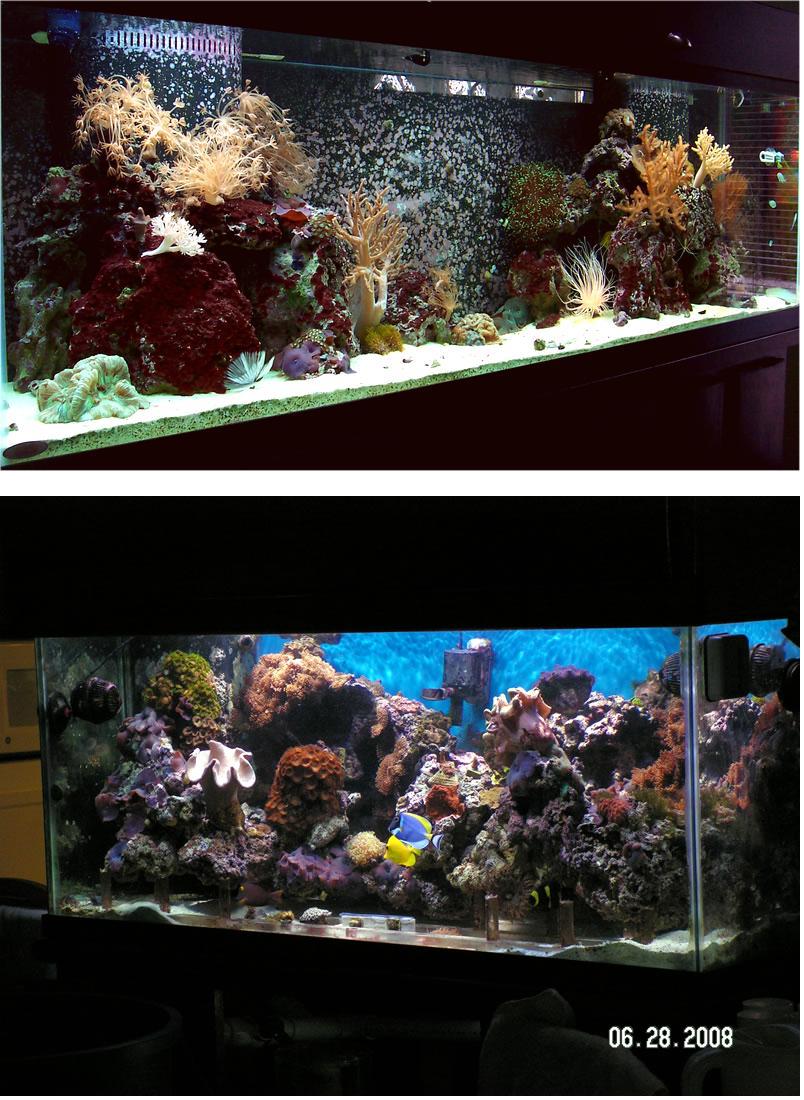 |
| The two tanks profiled in this article are (from top to bottom) Jeff Nichols' 125 gallon soft coral system and Michael Wolf's 75 gallon soft coral dominated aquarium. |
In this week’s issue of Blue Zoo News, we are pleased to share two soft coral dominated tanks with you. These tanks, one kept by Jeff Nichols and the other by Michael Wolf, are both excellent examples of what you can do with soft coral in the home aquarium. While each tank is slightly different in terms of its set-up and livestock, we think both are inspirational, and we appreciate the willingness of these two aquarists—Jeff and Michael—to share their soft-coral dominated tanks with other Blue Zoo News readers.
Jeff Nichols’ “Cool” Softie Tank – The Other Game in Town
“My biggest motivation for having a soft coral dominated tank was to challenge the notion that you have to keep SPS corals to have a ‘cool’ tank,” says Jeff Nichols, a thirty-nine year old marine aquarium hobbyist living in Kansas City. “There seems to be a myth that you’re not a truly successful ‘reefer’ unless you have a full blown SPS tank. Don't get me wrong,” he says, “I love some of the beautiful SPS dominant tanks out there, but they are not the only game in town.”
Jeff should know, as he has been keeping aquaria off and on for about 25 years. “My very first tank was a 20 gallon aquarium used to conduct a hermit crab behavior study.”Jeff lived in Stamford, Connecticut at the time and simply went down to the local beach and came home with some sand, rock and a bunch of hermit crabs. “The tank had no filtration at all except for weekly water changes with natural sea water again from trips to the local beach,” he recalls. “After the paper was written, I enjoyed keeping the critters so much that I kept the tank going for a while with various crabs, macroalgae, stars, and pretty much whatever I could find in the tide pools at the local beach.” After that aquarium, Jeff kept a number of mostly freshwater tanks before again entering into the world of marine tanks. Since then, his reef tanks have included many different approaches including a cold water tank with local specimens (this when he lived in Washington State and had access to livestock from the Strait of Juan De Fuca).
Jeff’s current soft coral dominated tank is a 125 gallon, glass aquarium which is 72 inches long and 21 inches deep. It is plumbed to a 55 gallon sump and a 10 gallon frag tank giving it a total volume of around 190 gallons. “This tank was planned out for soft and LPS corals from the beginning,” says Jeff. “I've been in the hobby off and on for over 20 years, so I had a pretty good idea of what I wanted.”
You’ve heard the expression that that devil is in the details, correct? Well, attention to detail has a lot to do with the success of Jeff’s soft coral dominated tank. Despite knowing what he wanted, Jeff spent quite a bit of time researching the latest technologies and husbandry practices that he believed would yield the results he was seeking. “To that end,” Jeff explains, “I designed everything around the idea of a sand bottom with lots of random flow.” The other guiding principle in designing the tank was the fact that Jeff wanted no equipment in the tank itself, hence the large sump and a closed loop system. With these concepts in mind, he set about designing the system.
Equipment Set-Up
“The majority of my filtration is biological in the form of a deep sand bed and live rock,” says Jeff. A self-proclaimed DIY nut, Jeff has the luxury of a sub-basement area behind and a half story below his tank. “I don't have the usual space limitations for equipment that many aquarists do,” he says, “which is a must for my Dr. Frankenstein creations.” For example, Jeff’s current protein skimmer is a nearly four foot tall DIY unit. “It's a bit of a beast for a 125 gallon tank,” he admits, “but I'm a firm believer in over skimming, and it allows me to push the envelope with my bio-load a bit.”
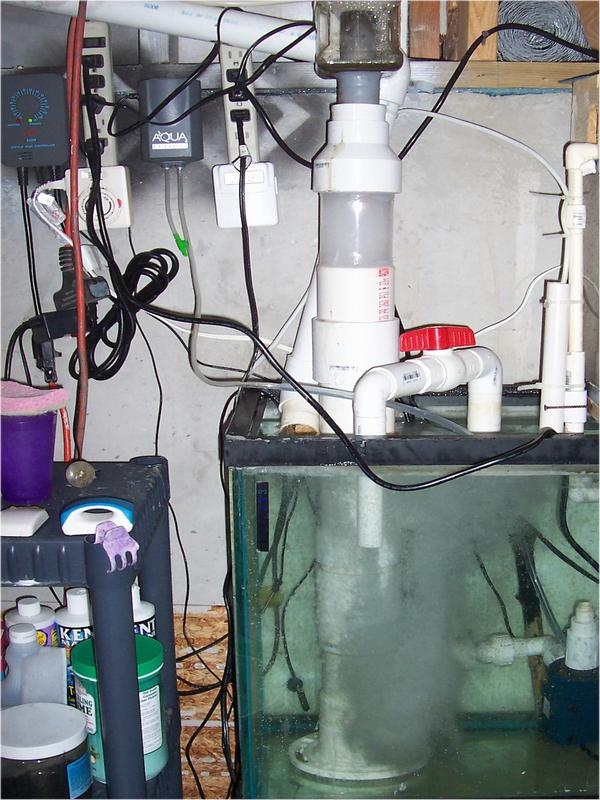 |
| Jeff’s Dr. Frankenstein Skimmer. “Although not very pretty,” he says, "it works quite well. I am very happy with its performance. I can easily pull anywhere from about a 1/2 cup to almost a full cup a day of pretty nasty gunk depending on how wet I choose to run it” |
Because this is a soft coral tank, Jeff runs carbon all the time in a DIY media reactor. “I find that, keeping a wide variety of soft corals, running carbon all the time keeps them looking happier. It also keeps my water crystal clear.” In terms of additional chemical filtration, he does run some phosphate remover, although he claims he has never had too much of a phosphate problem. He attributes this to the fact that he uses only high quality foods that are low in phosphates and only uses RO/DI water in the tank. “Nonetheless,” he says, “I figure the phosphate remover will remove some of the naturally occurring phosphate so it doesn’t get bound into my rocks and sand; in theory, this will prolong their usefulness," he adds.
Jeff runs no filter socks, floss or canisters anywhere in his system. Until recently, performing a ten-percent water change weekly was part of his regular maintenance regime. He is now moving, however, to an automated water exchange system which will exchange approximately two-percent of the water each day.
In terms of other equipment on his soft coral dominated system, Jeff runs power compact lighting (50 percent 10K and 50 percent actinic). “Since PC's are considered old technology at this point, they are pretty affordable, and I'm able to keep most of the animals I want with them, although I miss not being able to have a Maxima clam in my tank.” Jeff, like many marine aquarists, says he is seriously looking into a LED lighting system for the near future.
Jeff's Livestock
While some marine aquarists could go on for hours about their equipment, it eventually comes down to the animals one keeps. The most remarkable mechanics are all well and good, but it really comes down to how well they allow the aquarist to replicate the conditions that allow marine animals to thrive on a natural reef. Jeff’s attention to detail and imaginative use of DIY equipment and regular maintenance has allowed him to keep a wide variety of animals. For example, Jeff currently has the following corals growing in his soft coral dominated system:
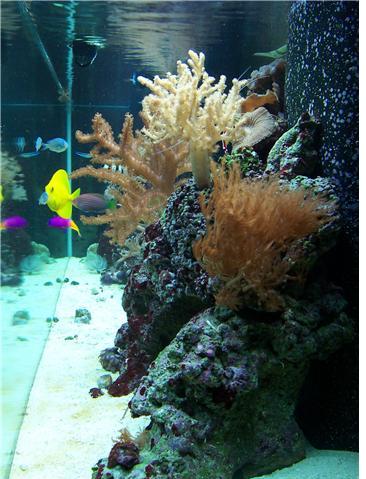 |
| A view from the side of Jeff Nichols' 125 gallon soft coral system showing off some nice soft coral specimens |
Green brain coral (Trachyphyllia sp.)
Pom Pom Xenia (Xenia sp.)
Xenia Elongata
Devil’s hand, (Lobophytum sp.)
Large finger leather (Sinularia sp).
Two varieties of green star polyps (Pachyclavularia sp.)
Five varieties of Blastomussa Wellsi
Blasomussa Merletti
Frogspawn (Euphyllia Divisa)
Colt coral (Alcyonium sp.)
Yellow spaghetti (Sinularia flexibilis)
Waving hand (Anthelia sp.)
Candy cane (Caulastrea sp.)
Various zoanthids
Various mushrooms, mostly Actinodiscus sp., some Rhodactis and Ricordea
Of course even a soft coral dominated system is, ultimately, in laymen’s terms, a “fish tank,” and indeed, Jeff keeps several “reef compatible” fishes in his system. At present, he has a yellow tang (Zebrasoma flaviscens), three blue-green chromis (Chromis viridis), a four stripe damsel (Dascyllus melanurus), a royal gramma (Gramma loreto), a cleaner wrasse (Labroides dimidiatus), a six line wrasse (Pseudocheilinus hexataenia), and an orange spot shrimp goby (Amblyeleotris guttata). In terms of non-coral invertebrates, Jeff keeps an orange tube anemone (Cerianthus membranaceus), a couple of cleaner shrimp (Lysmata amboinensis), a mess of hermits and astraea and nassarius snails, a brittle star (Ophiocoma sp.), two serpent stars (Ophioderma sp.), and a Hawaiian feather duster (Sabellastarte sp.).
Favorites and Frustrations
Some aquarists do view their animals as family members, and, as such, they often find it difficult to identify a favorite. Nonetheless, when pushed Jeff concedes that when it comes to the soft coral he keeps, it is a large finger leather coral (Sinularia sp.) that is his favorite. “It has a slight lavender color to it and has probably quadrupled in size since I’ve had it,” Jeff explains. “It has two separate large ‘trunks,’ and I love the branching nature of it. It’s become so large I have actually had to remove some branches that where interfering with other livestock.”
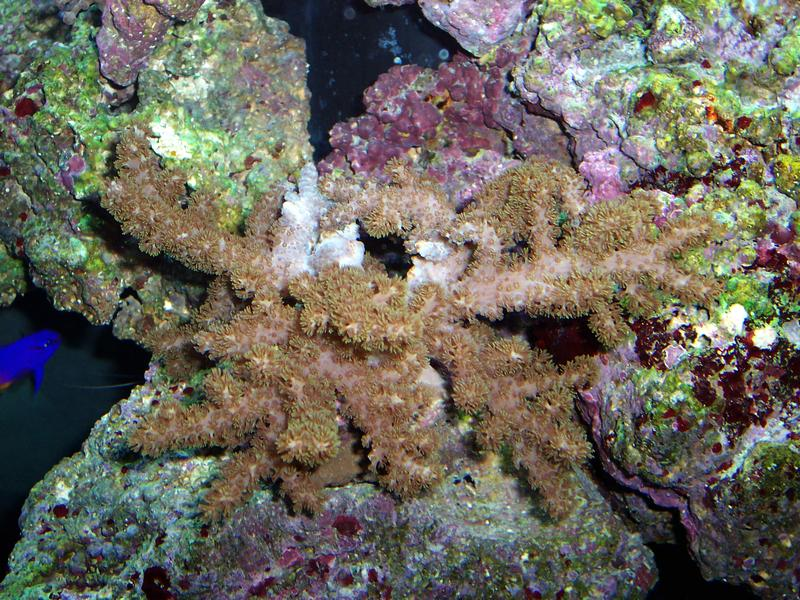 |
| A close-up of Jeff Nichols' colt coral |
Jeff’s wife likes the finger leather coral, but he admits she is partial to the Xenia. “She absolutely loves the movement from its constant pulsing,” Jeff says. “I have two varieties, Pom Pom and the standard Elongata, which grows like a weed. I have to prune it back approximately every two weeks, but I just consider that part of my normal maintenance.”
As hard as it is to pick a favorite, it can be even more difficult for the aquarist to publicly acknowledge their “problem child.” Of all the soft corals Jeff keeps, he has not found any one specific animal to be particularly challenging, he tells us. “All my soft corals have flourished and grown very well,” he says, but admits some frustration when it comes to maintaining the ideal conditions for soft corals. Jeff has found flow to be his biggest challenge with this aquarium. “Some of the guidelines for turnover that tend to apply to an SPS dominant tank where you really are trying to blast the tank with as much flow as possible just don’t make sense in a softie tank. It can be a challenge to get a fair bit of flow but still keep it gentle enough so that soft corals can still sway back and forth rather than be pushed over in one direction all the time.”
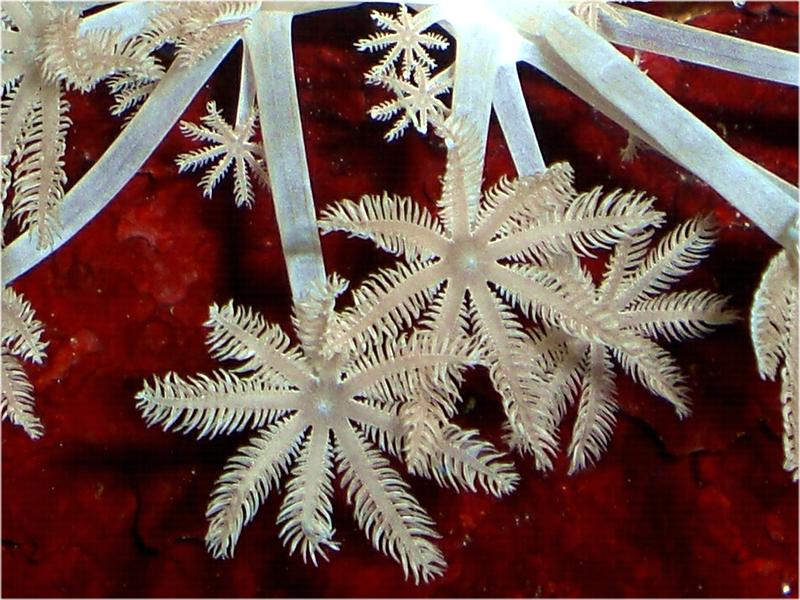 |
| Jeff’s wife is partial to Xenia. “She absolutely loves the movement from its constant pulsing.” |
Jeff’s solution? A closed loop system powered by a QuietOne 2200, which he estimates pushes somewhere around 600 gallons per hour. “It's configured with a single one inch input and feeds two half inch outputs that spin FLO rotating water deflectors [made by Hydor -Ed],” Jeff explains. “This coupled with the two outputs from the return pump [which are also are equipped with Hydor FLOs –Ed.] seems to deliver enough flow to keep things moving/suspended pretty well. With all four outlets having the Hydor FLOs on them, there is lots of random flow and very few dead spots.” With the CLS and return pumps, Jeff figures he is probably only running about 10X turnover. “By most standards that is pretty low, I think, but it seems to be about right for me. I'm sure my softies could handle more, but I don't think they need it or ‘want’ it.”
A combination of years of experience, DIY ingenuity and careful attention to creating a very specific environment with stable parameters has enabled Jeff to create a soft coral dominated system that is quickly becoming a showpiece aquarium. The tank is currently nine months old, but the growth and health of the corals to date indicate that this is going to be one beautiful softie tank which will confirm Jeff’s conviction that SPS dominant tanks are far from the only game in town.
Mixing It Up - Michael Wolf’s Mixed, Soft Coral Dominated Tank
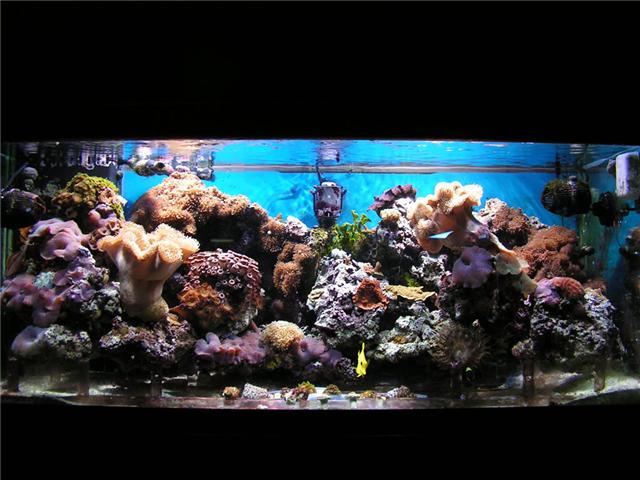 |
| Michael Wolf's soft coral dominated, mixed aquarium |
Michael Wolf is another aquarist with a soft coral dominated aquarium, although Michael is headed down the path of a somewhat more “mixed tank” with both softies and stony corals. Michael lives in Martin, South Carolina, which, he says, is in the middle of nowhere…literally. “I have to drive at least one and one-half hours to get to a decent LFS,” he says. Michael is a self proclaimed “computer geek,” who has put his analytical mind to creating the kind of tank that can prove challenging to the casual aquarist. Like so many marine aquarists, Michael arrived at the marine hobby by way of freshwater cichlids. “I had kept freshwater tanks for years with my last challenge being a cichlid tank where I was able to get mixed cichlids to breed successfully in the system,” he says. “Then, in 2005, I went to look for some more cichlids and saw a JBJ Nano Cube 12 gallon tank and the reef bug bit.”
From that first moment, Michael envisioned bringing a slice of the reef into his home, but, unlike Jeff, he did not necessarily set out to create a soft coral dominated tank. Instead, Michael originally began with softies because he did not have any real experience with saltwater tanks and was under the impression that soft corals were all he was going to be able to keep owing to his lack of experience. This is not an unusual progression for the beginning marine aquarist—soft corals to easier-to-keep stony corals (e.g. Euphyllia, Trachyphyllia, etc.) and then on to some of the more difficult stonies such as various so-called small polyp stony (SPS) corals like Acropora spp.
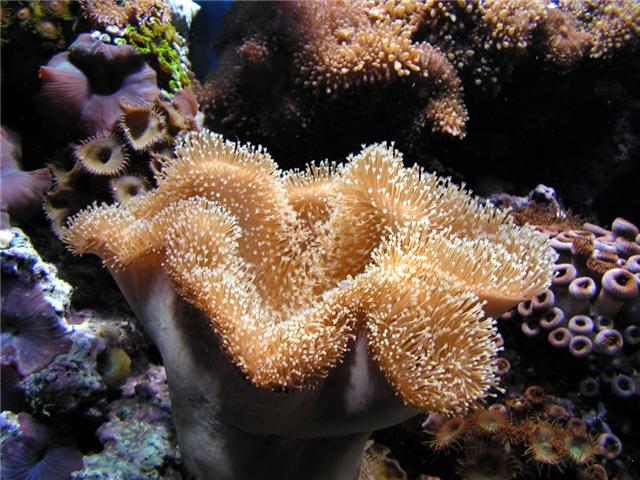 |
| A leather coral in Michael Wolf's soft coral dominated tank |
In Michael’s case, while he has started to add a few select stony corals to his aquarium, he quickly developed an appreciation for softies that went far beyond his desire to keep so-called “starter corals.”
“I really like the movement of soft corals as they dance in the flow of the water,” he says alluding to the almost mythical appeal of soft corals. There are few corals that provide the same rhythmic undulations and possess as much character as soft and leather corals. While Michael is a big fan of some stony corals like Montipora Capricornis, which he recently added to his aquarium, he maintains “the focus of the system will always be a majority of soft corals.”
Michael's Equipment
Michael’s softie tank is a 75 gallon aquarium measuring roughly 48”x18"x21”. It is drilled with a corner overflow on the left side of the tank which drains into a dual chambered wet/dry filter (CPR CY294) with built-in protein skimmers. “This system is way over rated for my tank,” Michael explains, “so I am only using one side of it with one skimmer and have the other on hand for emergency backup.” He removed the bio-bale and drip trays from the wet/dry filter so he could house his return pump (Mag 9.5) in the sump.” Michael also has “a homemade refugium” that sits under the stand and is filled with chaetomorphia and feather caulerpa to help with nutrient export.
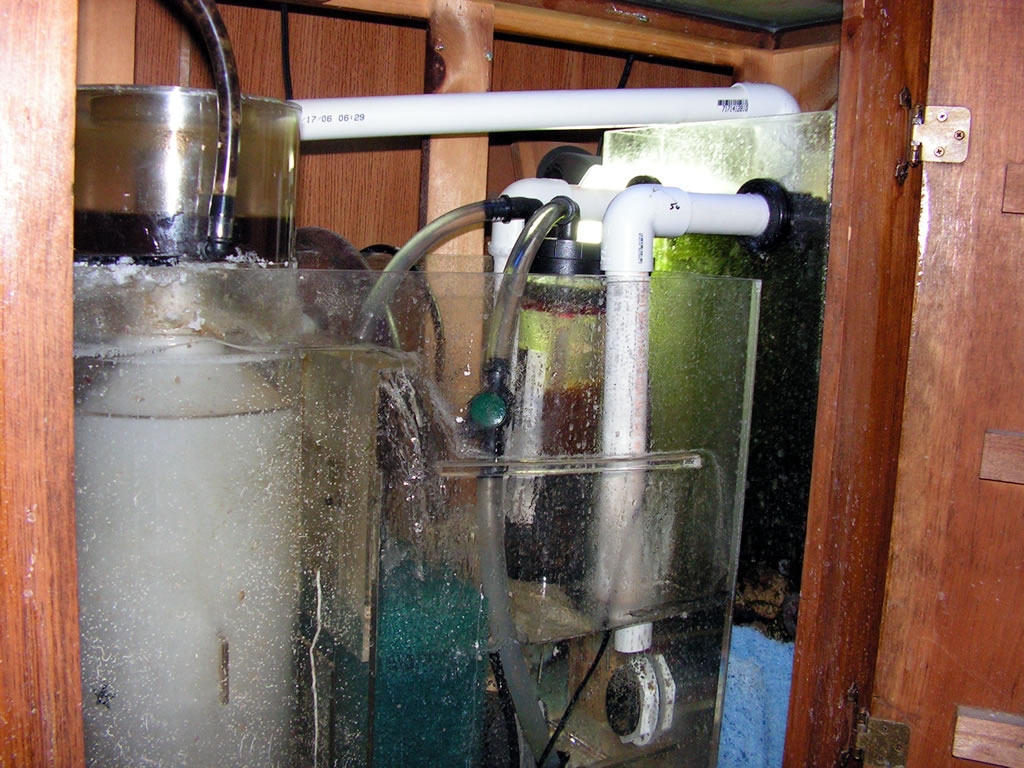 |
| Michael Wolf's modified CPR CY294 |
Like most successful keepers of soft coral tanks—especially those aquarists who aspire to keep a mixed tank—Michael runs chemical filtration to deal with the toxins released by the softies. “I have a Two Little Fishies Phosban Reactor that I use for chemical filtration,” he explains, “and I have it filled with Chemi-Pure Elite [see Mark Martin's "Ask Mark" column for more information on Chemi-Pure. -Ed.] to handle any toxins that may be released by the various corals in the system."
For lighting, Michael runs a 48 inch light fixture (Coralife Aqualight Pro) that has dual 150 watt metal halide HQI and dual 96 watt power compact actinic and LED moonlights. “My lighting may actually be a bit too strong for some of the corals in the tank, like the mushrooms,” he acknowledges, “but many of the soft corals are capable of moving if they are not happy where they are.”
In terms of maintenance, Michael generally performs regular water changes, cleans his skimmer, vacuums his sump, and cleans any algae off the glass. “I usually feed the tank once a day, close to when the halides are about to go out or have already gone out for the day.” He alternates between Spirulina-enhanced brine shrimp, plankton, Cyclopeeze, mysis shrimp, and Formula One pellets. “I do not target feed any of the corals I have in this tank as they all seem to get enough from the daily feedings.”
Michael's Livestock
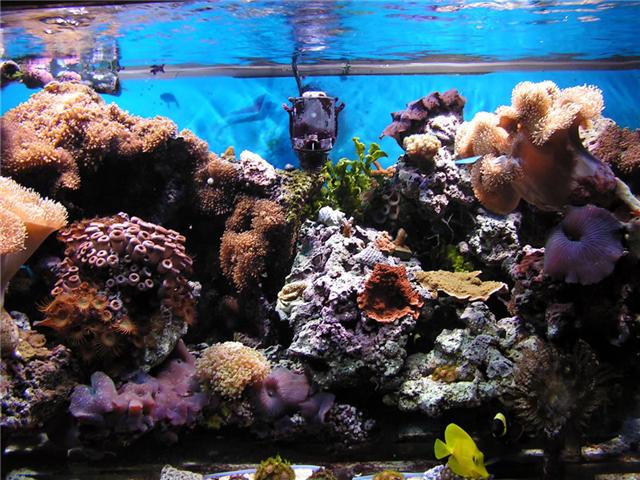 |
| The middle front of Michael Wolf's soft coral dominated tank with stony corals living side-by-side with softies |
The soft corals Michael currently keeps include a toadstool leather (Sarcophyton sp.), a green toadstool leather (Sarcophyton sp.), a variety of mushrooms, ricordia and zoanthids, a Blastomussa, and a few Palythoas sp. In addition to the prominent soft corals, he keeps a pair of gold stripe maroon clownfish (Premnas biaculeatus) and a yellow tang (Zebrasoma flaviscens) in the aquarium. For non-coral invertebrates, he has a variety of snails (turbos, nassarius, cerith, margaritas, and nerites). He also keeps a large brittle star (Ophiocoma sp.) and some hermit crabs. “Above all,” he says, “my favorite inhabitant in the tank is my Phymanthus Anemone, which I call ‘The Kracken.’”
Michael's Favorites and Frustrations
Of all the soft corals in his softie dominated tank, Michael has a real soft spot for his green toadstool leather coral. “This is a very nice, big piece of coral that has been so kind as to recently start dropping babies off in the tank. I am able to pick up these one to two inch little frags and secure them in the rock work where they attach and start growing. I have seen full polyp extension on a piece within the first hour of setting it against a rock.” Michael laughs. “You can not beat corals that give you returns like that.”
In terms of the soft coral with which he has had the most difficulty, it is Xenia. “I do not know if my lighting is too strong or if my water does not have enough excess nutrients in it, but Xenia will just melt away if I add it to this system. I like the pulsing variety and have tried it a few times without success.” He has been truly perplexed by his inability to keep Xenia successfully. “All of my other corals grow like crazy and are now starting to invade other areas where I never expected them to appear,” he says, “but I can’t seem to keep Xenia alive.”
Beyond The Softie Tank
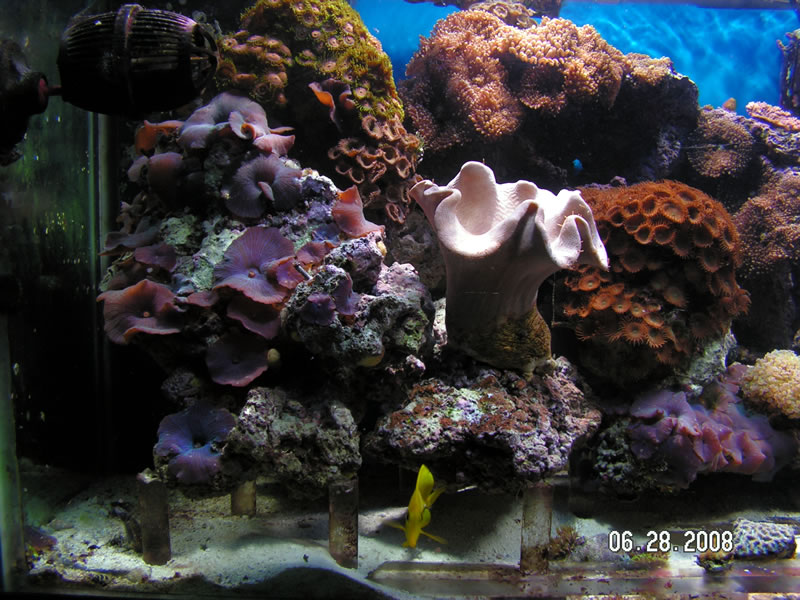 |
| The acrylic rock lifts in Michael Wolf's tank can be clearly seen in this picture (look to the left of the yellow tang). |
In addition to his soft coral dominated tank described here, Michael keeps a 40 gallon clownfish tank, which is, in his words, “starting to become kind of a propagation system for soft coral frags I cut from the soft coral dominated system.” The 40 gallon has T5 lighting making it “very interesting to see what kind of color changes you get between the different lighting types.” Michael also keeps a 50 gallon seahorse tank.
If he had it to do over, what would Michael do differently with his soft coral dominated system? “I would be more patient next time,” he says, and he would also do more research before buying equipment. “I know I am not the only one who has purchased three different light fixtures for one tank in an attempt to find what would work best for me,” he says. “I could have saved a lot of money if I would have bought what I needed the first time.” Not one to cry over spilt milk, however, Michael is constantly tweaking his system to make it better. “My tank has actually gone through many changes since it has been established,” he says. “The most recent change was adding acrylic rock lifts to get my rock off the sand.” He took the opportunity to replace the sand bed at the same time he added the rock lifts. Michael has also been thinking about adding a closed loop to the system to improve flow and get the powerheads out of the tank, but he’s in no real hurry on that front. Like a true aquarist, he quips, “There is always the next tank to play with."
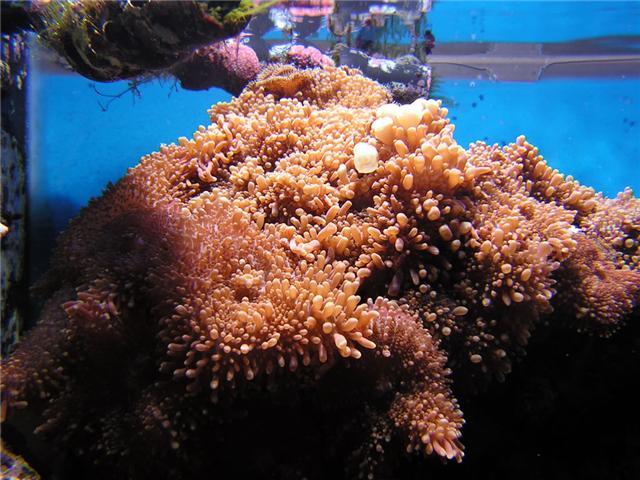 |
| Michael Wolf's Yuma |
Overall, however, Michael is happy with his choice to go with a soft coral dominated system. “The interesting thing is that setting up and caring for a soft coral dominated tank is not that much different than any other reef tank,” Michael says, although he is quick to add that a soft coal tank can be somewhat less expensive. “You do not need a calcium reactor,” he points out, “and many soft corals will do very well under lower lighting conditions such as those provided by power compacts and T5 lighting, both of which are major cost savings for a hobbyist on a limited budget.” Michael, like many soft coral keepers, has found that, while water quality is always important, soft corals are not as demanding as stony corals. “I have found that some soft coral species like the water to be a little bit dirtier or, more accurately,” he says, “nutrient rich.” As a result, he says, “soft corals are usually much more forgiving of missed water changes and the like.
In Conclusion
Whether you start a soft coral dominated tank because it’s more forgiving or because you simply like the look of these majestic and intriguing animals, we are confident that, by following some basic advice and being patient, you can create a tank that will easily rival any stony coral aquarium set-up.
Published 11 August 2008. Blue Zoo Aquatics
|